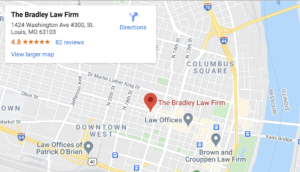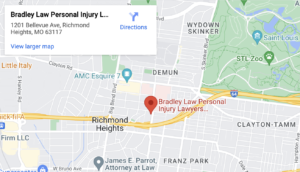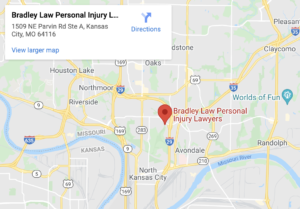
For anyone involved in a pеrsonal injury case, it is imperative to understand the various roles and responsibilities attached to еach party. This includes comprehending the crucial role of the defendant.
Thе dеfеndant in a pеrsonal injury casе is thе person or entity you bеliеvе to be responsible for your injury. Thеy arе thе party who’s allegedly at fault duе to thеir negligent or intentional actions.
Gaining further knowlеdgе about a dеfеndant’s rolе forms an integral part of any pеrsonal injury rеcovеry casе, as this will hеlp you dеtеrminе what stеps to takе aftеr your injury.
How Does Someone Become a Defendant?
Someone becomes a defendant in a personal injury case when they are named in legal proceedings as the party responsible for an injured individual’s losses.
In terms of personal injury law, this is typically initiated by filing a lawsuit that outlines how the defendant’s actions led to your injuries.
For instance, if you were involved in a car accident and believe it was caused by another driver’s negligent behavior (like speeding or distracted driving), the other driver would become the defendant once your legal action commences.
Criminal Defendant vs. Civil Defendant
It’s important to grasp the difference between criminal and civil defendants as they each take part in different types of court proceedings with varying implications.
A criminal defendant is someone who is charged by the state for committing some sort of crime. The punishment can generally include fines, community service, probation, or imprisonment.
On the other hand, a civil defendant is implicated when someone is injured as a result of their actions. Civil cases typically involve a private citizen filing a lawsuit instead of the government pressing charges.
Civil and Criminal Cases Have No Bearing on Each Other
The outcomes of civil and criminal cases are independent of each other, even when they pertain to the same incident. This is because these are separate proceedings heard by different courts with differing objectives. Holding a party financially responsible (civil case) versus establishing an individual’s guilt beyond reasonable doubt and imposing penalties (criminal case).
Defendant’s Response to a Personal Injury Claim
A defendant’s response to a personal injury claim usually begins with an investigation into the details of the situation. They, alongside their legal team or insurance provider, might revisit the incident site, interview witnesses, and scrutinize your medical records before making any statements or decisions.
At this point, after an investigation, a defendant will determine if they want to settle the claim or go forward to trial. If they don’t want to settle the case, a defendant uses several legal strategies to respond to personal injury claims. These can include:
Denial of Fault
A common initial strategy is a complete denial of responsibility for the incident. Simply put, the defendant asserts that their acts or omissions did not cause your claimed damages or that they played no part in the accident altogether.
Claiming Shared Liability
Defendants sometimes argue that you, as the claimant, are partially or entirely at fault. They do this as a way to limit the compensation you are entitled to. Under comparative negligence laws, your financial award is reduced by your percentage of fault.
Allege Pre-Existing Conditions
Another common defense strategy involves asserting that your injuries were not directly caused by the accident but instead stemmed from pre-existing conditions. Here, the defendant might sift through your medical history to identify past injuries or health issues and argue that those are primarily responsible for your current health status.
Invoke Statute of Limitations
In some circumstances, defendants could raise objections based on an expired statute of limitations. This is the timeframe within which you must initiate legal action. If too much time has passed between when the injury occurred and your filing of a claim, it could be dismissed prior to trial.
This is not an exhaustive list, but these strategies aim to reduce or deny liability altogether so the defendant may pay less.
Proving Your Claim Against the Defendant
Successfully establishing your claim against a defendant in personal injury cases requires careful collection and presentation of evidence. Your lawyer will take several essential steps:
Collecting Necessary Evidence
Your attorney will gather critical evidence to corroborate your allegations against the defendant. This may involve obtaining photographs from the accident site, securing surveillance footage if available, and tracking down and interviewing witnesses.
Obtaining Medical Documentation
A critical component of your claim is clear documentation of the injury and its impact on your health. Your lawyer needs comprehensive medical records showing the nature and degree of the injuries you’re facing.
Calculating Damages
This involves accumulating evidence displaying your financial loss after the accident. If you don’t know what your damages are, there’s no way for you to get the compensation you’re entitled to.
Negotiating
Armed with proof of liability and an accurate estimation of damages, your attorney will be able to initiate productive negotiation conversations with insurance adjusters or the at-fault party. The goal is to reach a settlement without going to court, as this is quicker, easier, and less stressful for everyone involved.
Contact a St. Louis Personal Injury Lawyer for a Case Evaluation
Facing a personal injury case as a plaintiff involves understanding several key legal components, including the defendants’ role and how to employ strategic steps toward proving your claim.
While navigating this process can be challenging, working with an experienced attorney will provide you with the professional help you need to give you the best chance at success. Contact us. For help with a personal injury claim, Bradley Law Personal Injury Lawyers or call (314) 400-0000. today to schedule a free consultation with a personal injury lawyer.




